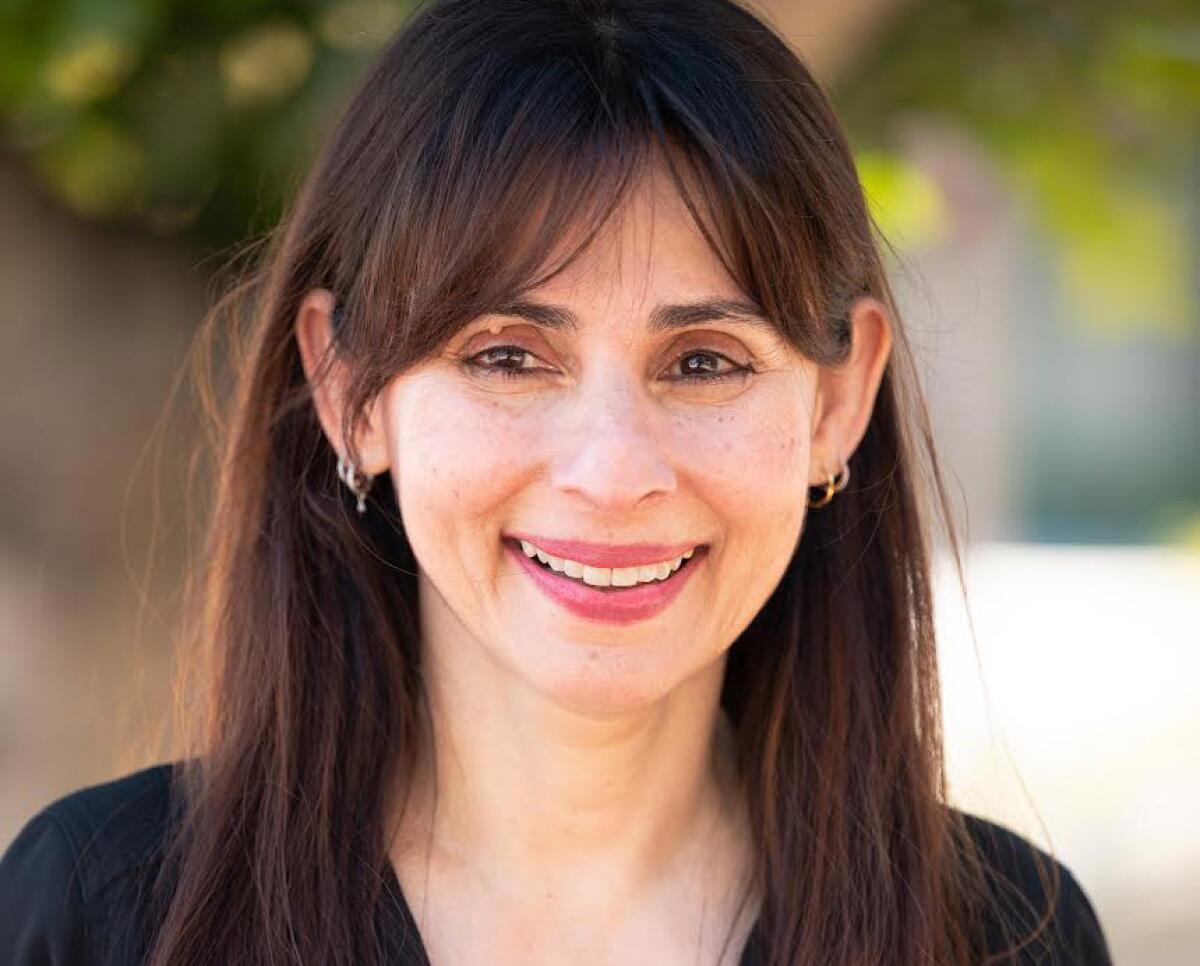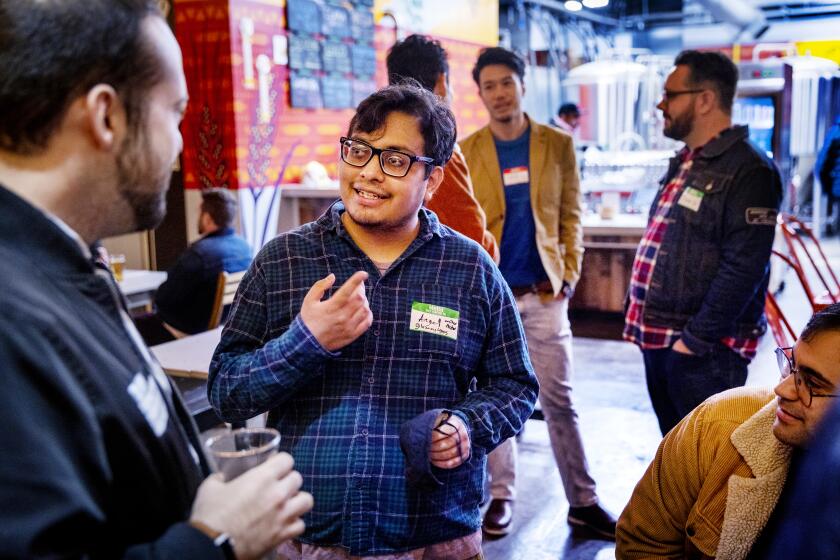A big remake is coming to California community college education, new chancellor says

Sonya Christian, California’s newly appointed community college chancellor, faces a significant challenge: She needs to remake how the system attracts students. Between fall 2019 and fall 2022, enrollment across the state’s two-year campuses plummeted to about 1.3 million students — a decline of more than 275,000 seats, state data showed.
The drop-off could have major consequences for campus funding, which by 2025 will be based on graduation rates, low-income student enrollment and overall enrollment. Christian, appointed last June, is crafting ambitious priorities to bring Californians back to community colleges and must also convince increasingly wary students of the value of higher education.
In an interview with The Times at East Los Angeles College, Christian outlined her vision for the sprawling system. She is focused on expanding access to a wide range of students, including those who have not traditionally turned to community colleges. She considers increasing “dual enrollment” to high schoolers — who would take community college classes for credit — as an imperative. She wants to make the transfer process to universities easier and recruit older students by offering community college opportunities through labor unions.
The 11th chancellor to the lead the system, Christian is the first woman and first person of South Asian descent to hold the post. She previously served as community college chancellor in Kern County.
The interview was edited for clarity and brevity.
Q: You’re a couple months into your new job, how is it going?
A: Lots of work. I wanted to understand the systems connected with key people in Sacramento — understanding the policy landscape. We’re making those connections and working out detailed problems. I’m really optimistic that what we will see with the California Community Colleges over the next evolution is, the necessary focus to change some issues, like equity issues at a very fundamental level.
Sonya Christian, head of the Kern Community College District, was appointed to lead the largest system of higher education in the country at a crucial time of plunging enrollment.
Q: What are your priorities and how will you deal with Vision 2030, the system’s blueprint for the future?
A: The fundamental principle of Vision 2030 is the idea of taking college to the future learner.
One is definitely dual enrollment. We have 436,000 eighth graders going into the ninth grade. What if, in the ninth grade, the default schedule was for those students to have at least a one college credit class — bringing college to them so they can start seeing what college is about. Twelve credits is a specific goal by the time they finish their four years of high school.
The Chancellor’s office is going to support colleges like ELAC, East Los Angeles College, to create partnerships with labor organizations … that will then give us access to hundreds of thousands of workers. We can come to an agreement to take college to them through their local community colleges.
The third area is equitable baccalaureate attainment. We’re looking at both the transfer and the community college baccalaureate to really start increasing those numbers.
Q: Enrollment drops have been particularly acute among older students, what’s your plan to draw them back?
A: When you’re talking about adult learners who are in our system, they’re working, they’ve got children, they’ve got complexities in their life. Our traditional courses have been semester-length, and the semester could be 15 weeks, 16 weeks. Say hypothetically, there is a working mother who can focus on one class in five weeks — get that knocked out, focus on another class and another class. And so in that semester, that adult learner could get a full load of 12 college credits. How can we change the incentives and the policies so that colleges would do that?
Q: How do labor organizations fit into increasing enrollment?
In terms of the partnerships with labor organizations and industry partners, we’re going to invite, let’s say, 10 community colleges and then engage with some large labor organizations. What we would look at is developing an agreement with them. We at the Chancellor’s office would provide the mechanism … to get them connected to local colleges and then figure out pathways. There’s a huge focus on noncredit classes because that’s kind of a gentle step into getting into college pathways.
Q: Why is the transfer rate to CSU stubbornly low?
You see a significant dropout through that application process. It’s ridiculous. Then they get admitted. And then they have to enroll. Some students are place-based, can’t go to another CSU. It should be seamless.
Q: An increasing number of community colleges are offering bachelor’s degrees. Are you hoping to expand the number of bachelor’s programs offered at community colleges?
A: [Assembly Bill] 927 allows us to be able to do 30 baccalaureate degrees every year. We’ve got a ways to even reach that number. I think we have the authority, and we’ve got a lot of work to do. It’s incumbent on the community colleges, the CSU and the UCs to really make sure that there is not a situation created where we are diluting resources. There is a lot more demand than we are able to provide supply at this point. We need to be focused on how we can increase transfers and how we can increase the community college baccalaureate, because there’s a lot of room to do it.
Community college enrollment is at its lowest level in 30 years as educators scramble to meet the needs of a new generation of students who may be questioning the value of higher education.
Q: You face a crucial 2025 deadline when the state ends its pandemic enrollment “hold harmless” policy, which froze funding at 2017-18 enrollment levels. Given the enrollment plunges, how are you preparing?
So I am optimistic that on that front, we’re going to see an uptick — you’re going to see it this year, you’re going to see next year as well. On the business side, we’re looking at very specific conversations about the right size for the communities a college serves. So not looking at growth for the sake of growth, but looking at the right type of growth for the communities we serve. So getting into those conversations — what is the right size for a particular college? So I think that is a much more focused discussion now.
So colleges may need to scale back classes, if enrollment isn’t high enough?
Right. It is looking at the alignment of community needs. It’s looking at and making sure that the package of courses and the enrollments [is right]. As opposed to just — we’ve got to get enrollments for the sake of enrollments.
Q: The state has spent tens of millions of dollars on planning and building housing for community college colleges. Do you support building more housing?
A: Very supportive of it. It’s going to be a game changer in some communities more than others. When you think about tackling the affordable housing problem at a city, at a county or the state, I believe that community colleges need to be a critical partner. Affordable student housing is one solution, and it’s a great one in a larger conversation. The housing crisis is huge. So, yeah, I do think California needs to continue to invest, and choose community colleges as a partner in the larger, affordable housing crisis in California.
More to Read
Sign up for Essential California
The most important California stories and recommendations in your inbox every morning.
You may occasionally receive promotional content from the Los Angeles Times.













